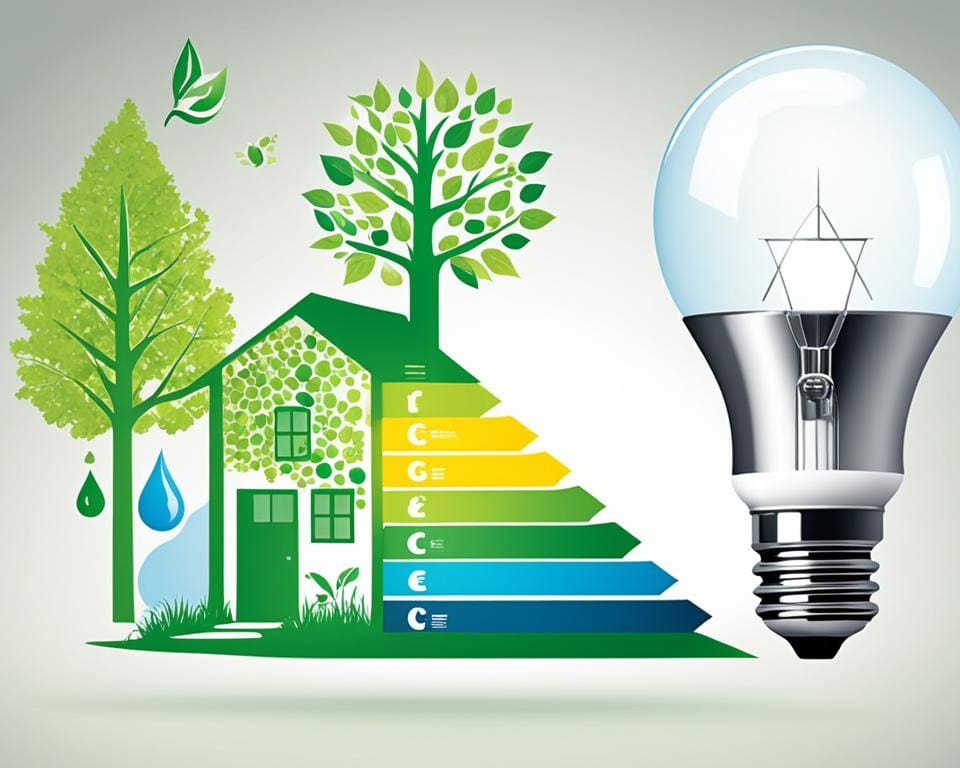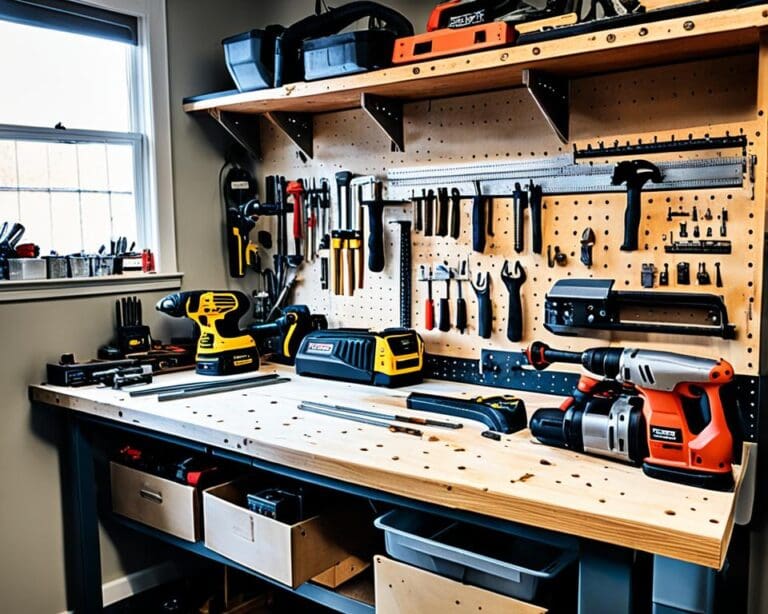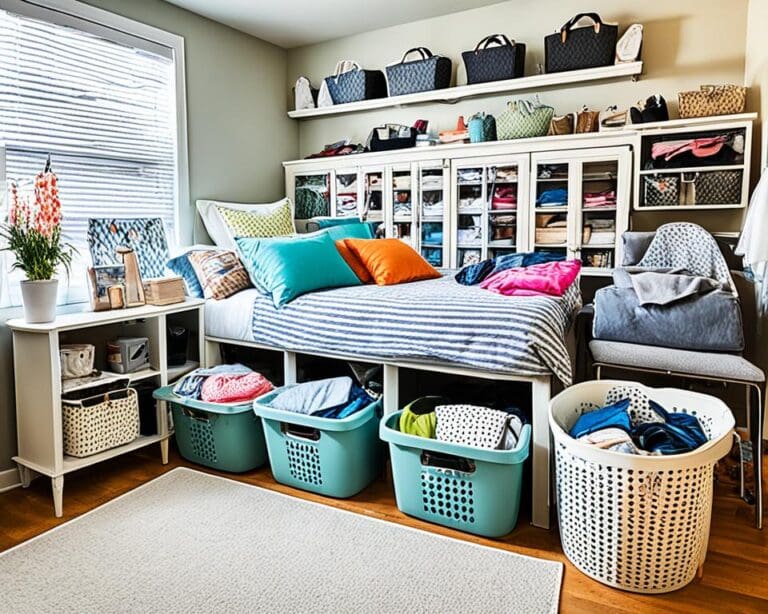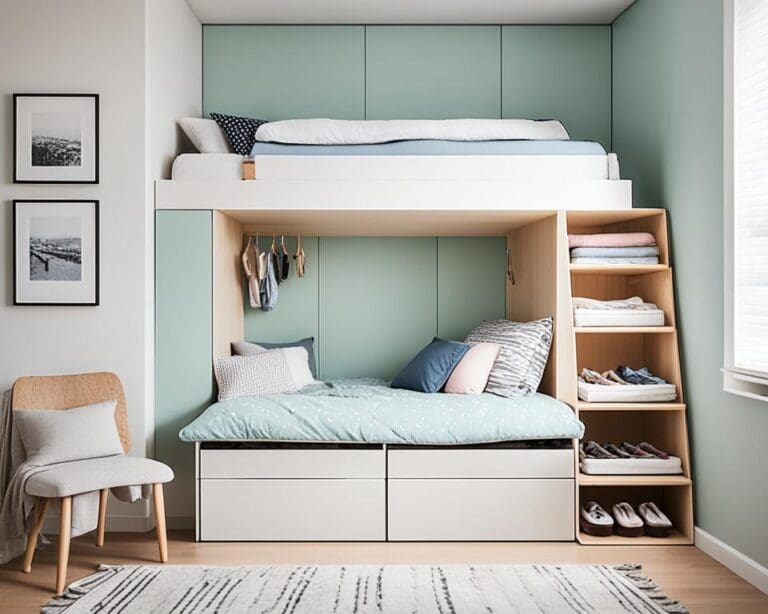Understanding how to save energy is key to a green lifestyle today. Using energy-saving tips cuts utility bills and makes your home comfier. Also, with growing climate change worries, homeowners want to make eco-friendly changes. These can range from turning off lights to unplugging devices. Even small changes play a big role in every sustainable home’s energy plans.
Switching to LED bulbs is a smart move. They use up to 85 percent less energy and save you over $100. Also, upgrading insulation and sealing leaks can prevent energy waste. It’s as if you’re closing a big hole in your wall. Thinking about solar panels? They offer long-term savings and might come with tax benefits. Every small step helps in lowering your carbon footprint.
Understanding Energy Efficiency for a Sustainable Household
Understanding energy efficiency is key to a sustainable home. It helps reduce environmental harm and cut down on utility bills. Conducting energy audits is a smart first step. These audits reveal how energy is used at home and suggest ways to use it better.
Importance of Energy Audits
Energy audits give important information. They show homeowners where their homes waste energy. The Home Energy Score, by the U.S. Department of Energy, ranks a home’s energy usage. It gives tips for saving energy and money. Fixing these issues leads to less energy use, lower bills, and a smaller carbon footprint.
Effective Home Insulation and Air Sealing
Good insulation and air sealing boost energy efficiency. Insulating walls, attics, and crawl spaces can cut heating and cooling costs by up to 30%. Air sealing keeps indoor air in, which saves money and makes your home more comfortable. Making these changes helps the planet and saves homeowners money.

Energy-Saving Tips for an Eco-Friendly Home
Turning your home eco-friendly can be rewarding. Smart appliance upgrades and renewable energy can cut your environmental impact. You’ll save money too. Here are strategies to make your home greener.
Smart Appliance Upgrades
Choosing energy-efficient appliances is smart for saving power. Think about getting smart thermostats and fridges. They use less energy.
Appliances with the ENERGY STAR certification are extra efficient. Using power strips stops unused devices from wasting energy. This helps achieve your saving goals.
Utilizing Renewable Energy Solutions
Add renewable energy like solar panels or wind turbines to your home. This move cuts down on fossil fuel use and is cleaner.
Solar panels have become cheaper, bringing tax benefits and rebates. Installing them can lower your energy bills, saving money over time.
Practicing Effective Energy Conservation Habits
Living eco-friendly requires adopting effective energy-saving habits. Daily small steps help lower how much energy we use. Turning off lights, choosing LED bulbs, and using power strips save a lot. Such actions can lead to big savings. Did you know lighting makes up about 12% of home utility bills? This fact shows why we must be careful with our energy use.
Simple Daily Habits for Energy Reduction
Adding energy-saving steps to your daily life cuts down unnecessary energy use. Try setting your thermostat to 78°F in summer and 68°F in winter. Changing the temperature by just one degree can use 6% to 8% more energy. It also helps to run big appliances, like dishwashers and dryers, at night. This action lessens strain on the power grid and keeps your home cooler.
Smart Home Technologies
Smart home tech can boost your energy-saving efforts. Programmable thermostats adjust your home’s temperature automatically. Plus, energy-efficient devices track and lower your power usage. They help fight against energy vampires—devices that use power even when off. Using these smart solutions helps your family lower its carbon footprint. It also supports local sustainability efforts.









